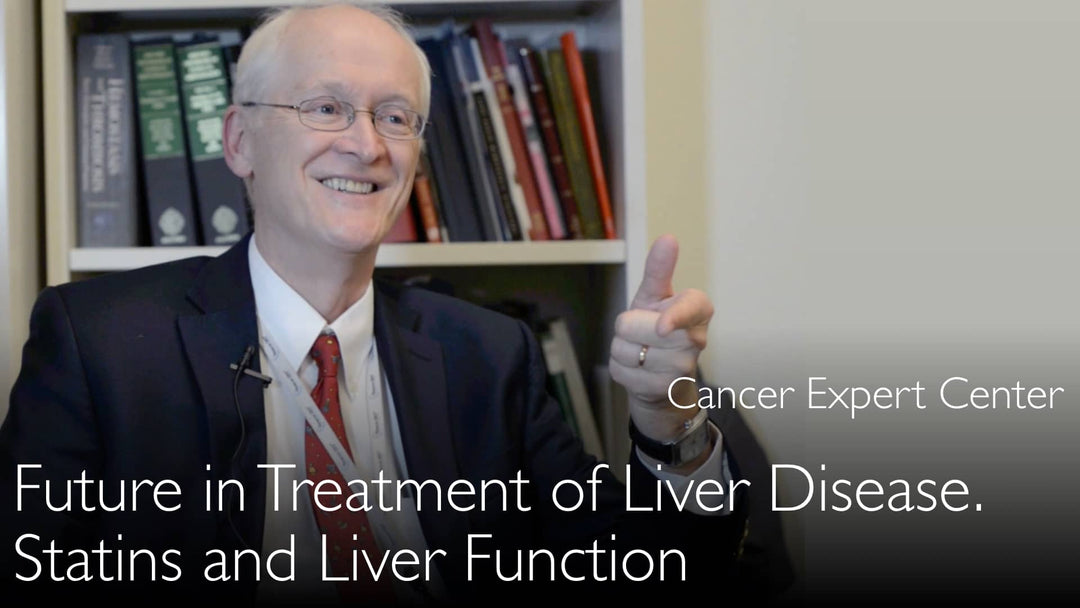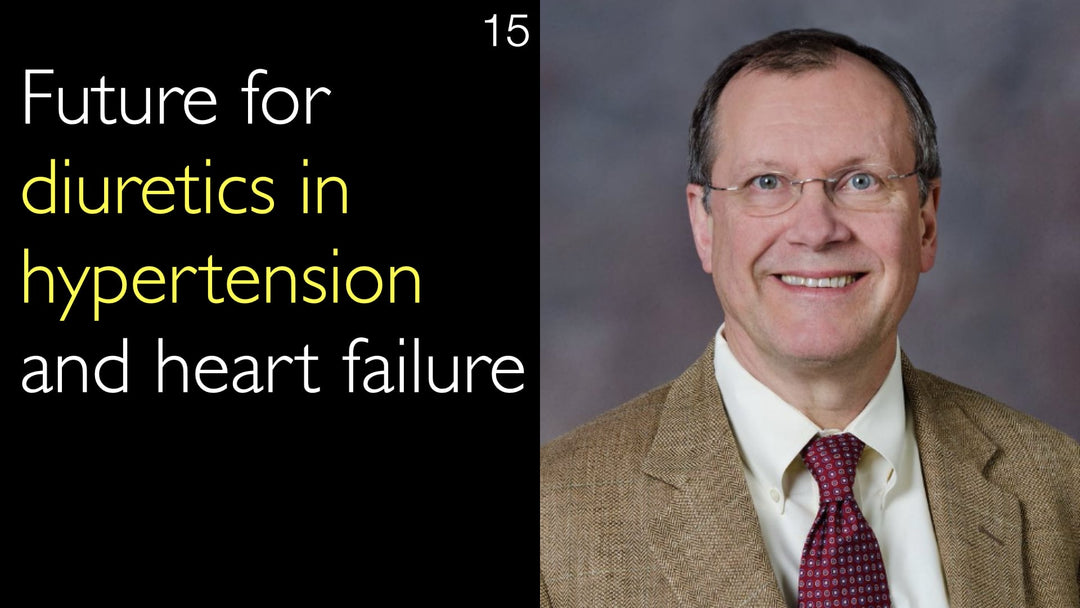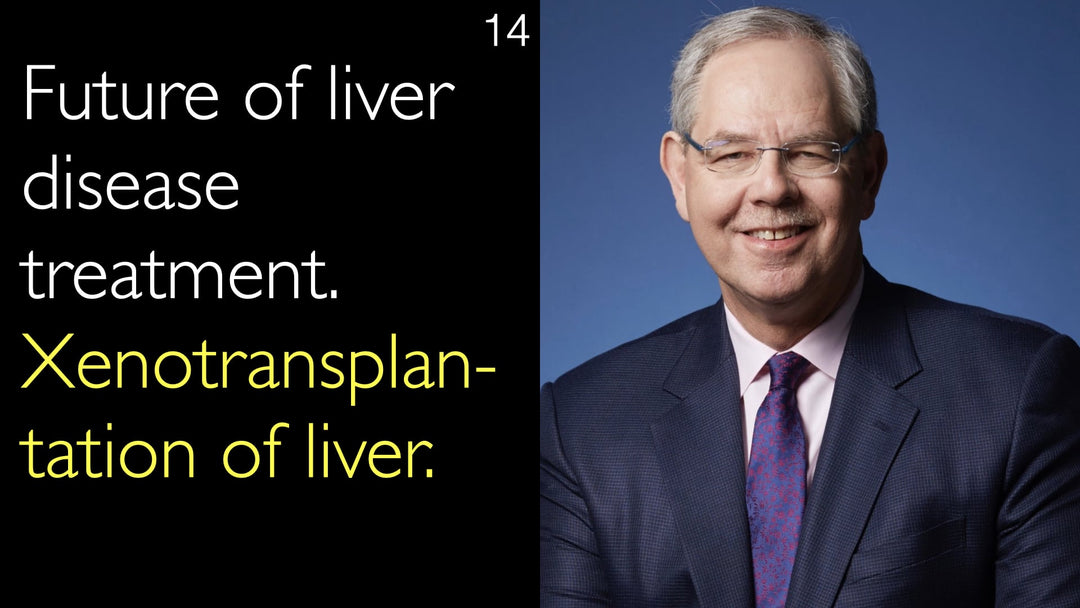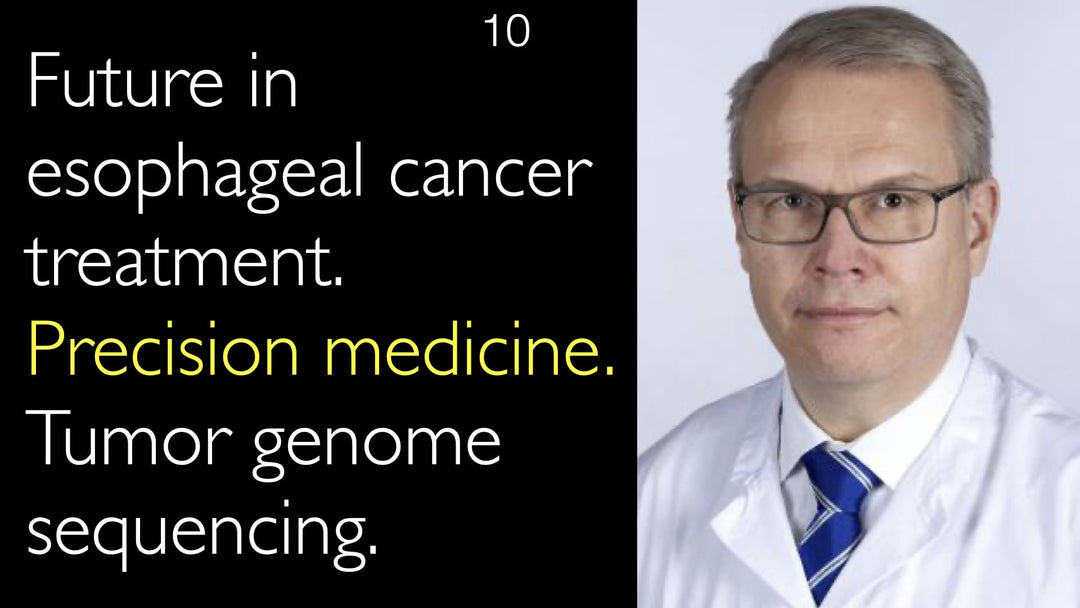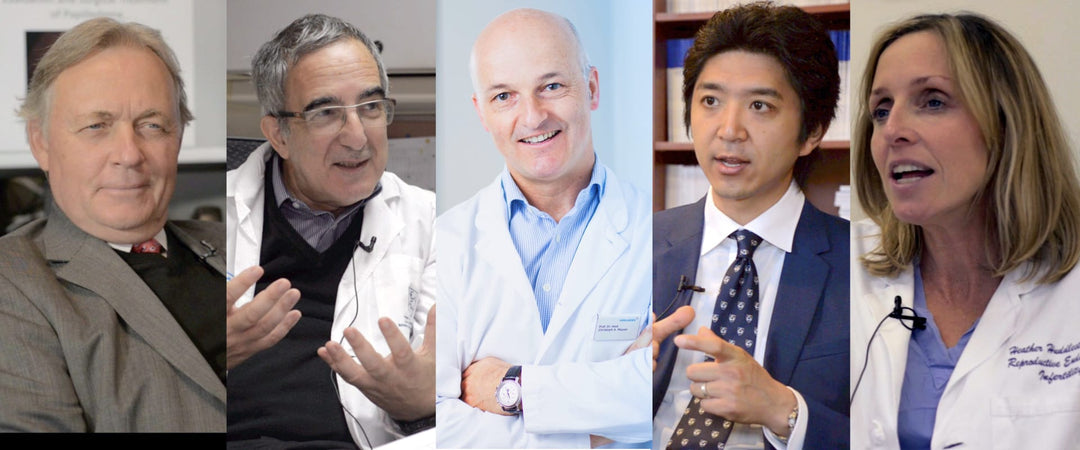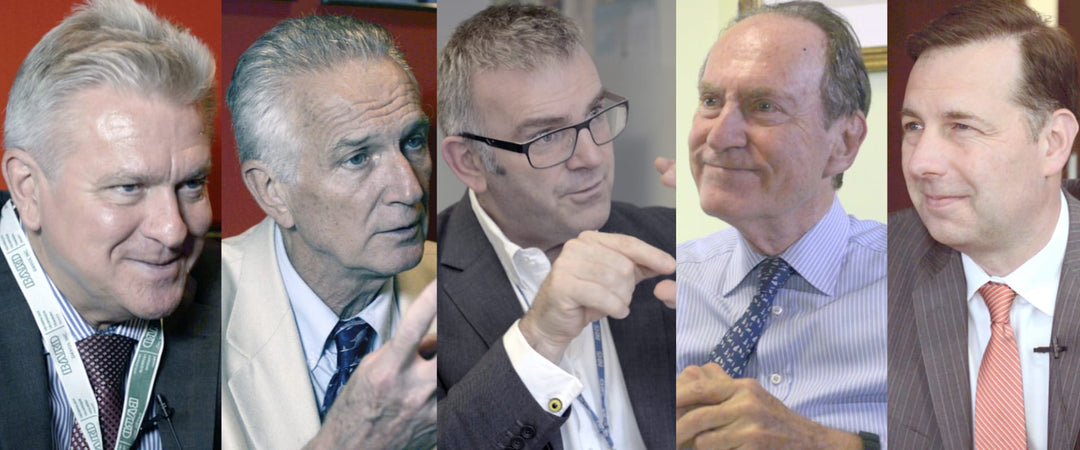Leading expert in liver disease and vascular biology, Dr. Simon Robson, MD, explains the future of chronic liver disease treatment. He highlights the critical role of metabolic syndrome and fatty liver disease. Dr. Robson details his research into purinergic signaling and the enzyme CD39. He connects this pathway to inflammation and the beneficial effects of statin medications. A Keystone symposium in 2016 will further explore these promising research avenues.
Innovative Approaches to Chronic Liver Disease and Metabolic Syndrome Treatment
Jump To Section
- The Metabolic Syndrome and Fatty Liver Disease Epidemic
- Purinergic Signaling and Liver Inflammation
- The CD39 Enzyme and ATP Clearance
- Statins and Their Vascular Wall Benefits
- Future Directions in Liver Disease Research
- Full Transcript
The Metabolic Syndrome and Fatty Liver Disease Epidemic
Dr. Simon Robson, MD, identifies the epidemic of overnutrition as a primary driver of modern liver disease. He emphasizes that metabolic syndrome and its associated fatty liver disease represent a massive and growing healthcare challenge. Current therapeutic interventions for these conditions are limited. Dr. Simon Robson, MD, notes that while some new medicines in development can delay liver scarring, they may also provoke unfavorable changes in cholesterol metabolism. This complex interplay makes finding safe and effective treatments a major focus of hepatology research.
Purinergic Signaling and Liver Inflammation
The research of Dr. Simon Robson, MD, centers on a process called purinergic signaling. This involves the molecule ATP, which is the primary energy currency inside cells. During cellular stress, inflammation, or clotting, ATP can be released outside of cells. Once outside, ATP acts like a hormone, binding to specific receptors and triggering more inflammation and thrombosis. Dr. Robson's laboratory studies the enzymes that break down this extracellular ATP. His work suggests that this ATP release is a final common pathway in metabolic stress, directly contributing to fatty liver injury and insulin resistance.
The CD39 Enzyme and ATP Clearance
A key enzyme in Dr. Simon Robson, MD's research is CD39. This extracellular enzyme is crucial for efficiently clearing ATP from the surface of cells, particularly the endothelium that lines blood vessels. By metabolizing ATP, CD39 produces adenosine, a compound that generally has anti-inflammatory and anti-clotting effects opposite to those of ATP. Maintaining high CD39 activity is therefore vital for controlling inflammation at the vascular interface. Dr. Robson's team is investigating how to target and support the CD39 enzyme to bolster its protective functions.
Statins and Their Vascular Wall Benefits
Dr. Simon Robson, MD, provides a fascinating explanation for the broad benefits of statin medications. It is estimated that up to 50% of the clinical benefit from statins comes from their effect on the vascular wall, not just from lowering cholesterol. Dr. Robson's research indicates that statins help stabilize the CD39 enzyme, preventing its loss or damage. This action allows CD39 to continue its vital work of clearing pro-inflammatory ATP from the endothelium. This link offers a mechanistic explanation for the potent anti-inflammatory effects of statins observed in patients.
Future Directions in Liver Disease Research
The future of liver disease treatment is poised for significant advances based on this research. Dr. Simon Robson, MD, is helping to organize a Keystone symposium in 2016 in Vancouver dedicated to purinergic signaling. This prestigious gathering will bring together leading scientists to discuss the role of this pathway in inflammation, liver diseases like fatty liver disease, gastrointestinal diseases, and cancer. The goal is to translate these discoveries into new therapeutic strategies that target enzymes like CD39 to more effectively treat metabolic syndrome and prevent its devastating complications, including chronic liver disease. Dr. Anton Titov, MD, highlights the importance of such research for improving patient outcomes.
Full Transcript
Dr. Anton Titov, MD: Future in treatment of chronic liver disease. Leading expert in liver disease and vascular biology. How advances in understanding of vascular inflammation help improve treatment of chronic liver disease? How chronic liver inflammation changes energy balance in liver? Where therapy of liver disease will focus in the future?
Future in treatment of chronic liver disease. Dr. Anton Titov, MD. Video interview with leading expert in liver diseases, liver transplantation and vascular biology, Dr. Simon Robson, MD. Treatment methods for viral hepatitis and non-viral hepatitis. Therapy for fatty liver disease and metabolic syndrome. Epidemic of overnutrition and mutated grains, including wheat.
Medical second opinion helps to make sure chronic liver disease diagnosis is correct and complete. We are looking at a bright future in treatment of chronic liver disease. Medical second opinion also helps to choose the best treatment for liver disease, hepatitis, steatohepatitis.
Dr. Anton Titov, MD: We discussed toxic diseases that affect the liver: aflatoxins, environmental pollutants and NSAIDs. Dr. Simon Robson studies purinergic signaling. He works on extracellular enzyme CD39. CD39 can be important mediator of effect of statins on vascular wall. In 2016 there will be a Keystone symposium in Vancouver on Purinergic Signaling.
Dr. Simon Robson, MD: Future in treatment of chronic liver disease is focused on diet and lifestyle changes. Future in treatment of metabolic syndrome and fatty liver disease.
Dr. Anton Titov, MD: We spoke about toxic diseases that affect the liver. We discussed viral hepatitis and non-viral hepatitis, fatty liver disease.
Dr. Anton Titov, MD: Where is hepatology going? Hepatology is study of liver diseases. Where do you see the most progress in treatment of liver disease in the next 10 years?
Dr. Simon Robson, MD: Gastroenterologist, Harvard Medical School. We need to address this epidemic of overnutrition. We need to tackle metabolic syndrome and fatty liver disease. We may find that it is not just nutrient excess that is causing these problems.
We may find that altered microbiome, other aspects of hygiene hypothesis, and some environmental factors predispose us to metabolic syndrome and fatty liver disease. Right now we don't have any major therapeutic interventions.
Dr. Simon Robson, MD: These are effective medicines to treat metabolic syndrome and fatty liver disease. There are a couple of medicines in development. They seem to delay scarring of the liver. But these new medicines to treat fatty liver disease and metabolic syndrome provoke changes in cholesterol levels.
These changes in cholesterol metabolism could be bad for the body. That is one of the major areas of liver disease research.
My laboratory studies purinergic signalling. Our research shows that cells use ATP as an energy currency. Sometimes cells release the ATP under diseases of stress. Cells are under stress when blood clotting or inflammation happens. ATP is released.
ATP works as hormone and binds to receptors. This process triggers inflammation and thrombosis (clotting). My laboratory works on enzymes that remove the ATP from the outside of cells. These enzymes make adenosine, which has the opposite effect to the ATP.
Dr. Simon Robson, MD: The food and nutrients, as we discussed, can cause fatty liver disease. The final common pathway of the disease process is a generation of energy. The currency of energy in the cell is ATP.
Metabolic syndrome happens when there is metabolic stress on the body. It is possible that excess ATP causes metabolic stress and metabolic syndrome. Purinergic signalling is a major factor in metabolic syndrome.
We have models of fatty liver disease. We showed that purinergic signalling is involved in creating fatty liver injury. We showed that high levels of the ATP can provoke diabetes with insulin resistance. We have discovered in great detail how this happens.
Fatty liver injury and fatty liver disease. The ATP leaks from the cells during inflammation. Inflammation is possibly a consequence of ATP release.
Dr. Simon Robson, MD: I propose that ability of the body to metabolize ATP more efficiently will preclude inflammation. It is curious that medicines that improve lipid levels (statins) also decrease inflammation. 50% of the benefit of statin medications comes from their effect on the vascular wall.
Statins have effect on the wall of vessels to control inflammation. Statins seem to stabilize the ectoenzyme, extracellular enzyme, called CD39.
Dr. Simon Robson, MD: We are working on this CD39 enzyme in my laboratory. Statins prevent loss of CD39 from vascular lining. Statins also prevent CD39 from being damaged. This action of statins allows CD39 enzyme to continue clearing ATP from the surface of the endothelium.
Endothelium is inner lining of blood vessels. Many of effects of statins could be related to this action on purinergic signalling. Also effects of other medications could modify activity of CD39 enzyme.
Our research also shows that phospholipids are important for CD39 enzyme activity. We are looking at ways of targeting CD39 enzyme to maintain activity at the vascular interface. This area of medical research can be very fruitful.
We will organize a Keystone symposium in 2016 in Vancouver.
Dr. Anton Titov, MD: Keystone Symposium is a prestigious gathering of leading scientists to discuss a particular theme of research. Our Keystone symposium in Vancouver will address purinergic signalling in inflammation, liver diseases (fatty liver disease), gastrointestinal diseases and also in cancer.
Dr. Simon Robson, MD: I will be very happy to provide you information about our Keystone symposium on purinergic signalling. Thank you very much for your interest!
Dr. Anton Titov, MD: Professor Robson, thank you very much for this very interesting conversation. We discussed a lot of aspects of the liver disease.
We talked about prevention of liver disease and treatment of liver disease, fatty liver disease. I'm sure that many viewers will also appreciate your expertise and sharing your wisdom with us. Thank you very much!
Dr. Simon Robson, MD: It was an absolute pleasure.
Dr. Anton Titov, MD: Thank you very much for coming over! Future in treatment of chronic liver disease. Video interview with leading liver disease expert. Statins effects, liver cancer and cirrhosis prevention. CD39.


